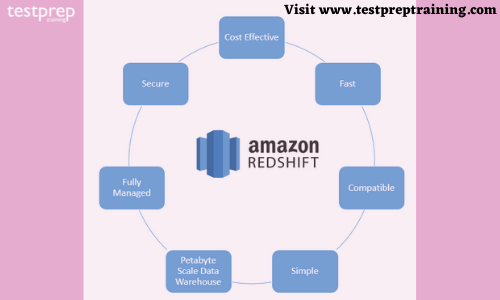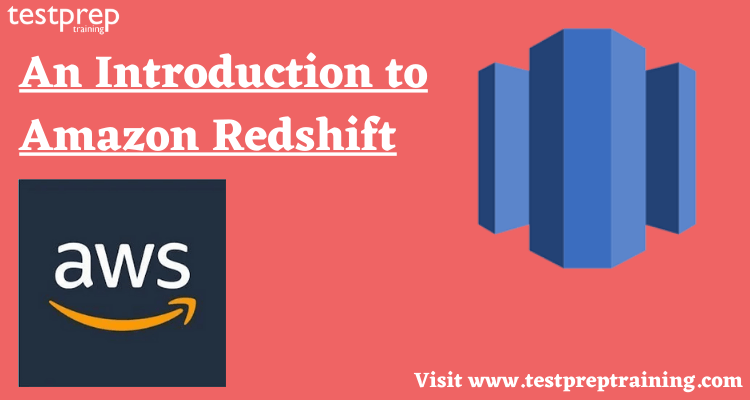No other data warehouse does it as clear to get new insights from all the data. With Redshift, one can query and connect exabytes of structured and semi-structured data across the data warehouse, operational database, and data lake utilizing the standard SQL. Amazon declares it is the world’s most durable cloud data warehouse — 2 times faster than the popular options, in particular. But is this right? And is Redshift deserves the hype? Here’s a complete pattern to the Amazon Redshift for you!
Amazon Redshift is a completely managed, petabyte-scale data warehouse assistance in the AWS Cloud. An Amazon Redshift warehouse is a compilation of computing sources called nodes, which are assembled into a club called a cluster. Each cluster administers an Amazon Redshift engine and includes 1 or more databases.
A data warehouse assistance like Amazon Redshift does all the hard work for you, so you can focus on other characters of your business. With Redshift, one can interpret data with the most modern predictive analytics, so they can make smarter conclusions that stimulate business growth. Also, the person can customize analytics instruments based on the necessities of their business and create deep perspicacity about sales, operations, customer service, and other necessary tasks. Further, you can practice Redshift for large-scale data migrations. Let us now discuss some benefits of using the Amazon Redshift!
Benefits of Amazon Redshift
Choosing the correct solution to warehouse the data is just as valuable as how one collects data for business intelligence. To obtain the most value from the data, it requires to be well-sorted, accessible, and easy to handle and store. Redshift data warehouse accessories allow such a combination of characteristics, but even so, it’s essential to know what it brings to the table before getting a decision to combine the system. So, here we are mentioning 5 of the most prominent advantages of using the Redshift for business intelligence requirements.
Important Query Speed Upgrades – With more complete datasets—especially when moving petabytes of magnitude—querying encounters an obvious lag in speed. Nevertheless, most database and warehouse resolutions today offer the capability to prepare requests and different purposes in parallel. Redshift data warehouse architecture has measured in at some of the more durable general and query speeds.
The comfort of Use and Accessibility- MySQL (and other SQL-based) continues as one of the popular and readily usable interfaces for database administration. Its easy query-based system makes platform selection and acclimation a breeze. Rather than establishing a totally new interface that demands important resources and experience to learn, Amazon decided to build a platform that operates much like MySQL, to wonderful effect.
While it does change any features, Redshift keeps much of what executes MySQL, including the back-end associates that operate with JDBC, PostgreSQL, and ODBC drivers while performing it easy to combine with most market intelligence agents. Moreover, it can quickly equate with other current tools and gives an easy training curve for current administrators and even end-users.
Fast Scaling With Some Complications- One of the most consequential benefits this grants Redshift is a resilient architecture that can balance in seconds to satisfy evolving storage requirements. A significant issue facing companies with swiftly changing data elements is that scaling can be both expensive and complex.

Costs Moderately Low- Amazon Services bills itself as a cost-effective resolution for businesses of all sizes. In harmony with the company line, Redshift presents a related pricing model that gives greater versatility while enabling companies to keep a watch on their data warehousing expenses. This pricing ability comes as a consequence of the company’s cloud foundation, and its capacity to keep workloads to a least on most nodes.
Robust Security Tools- Huge data sets often include sensitive data, and also if they don’t, they still accommodate significant knowledge about their businesses. As such, the appropriate data warehouse solution must have great protection mechanisms to lock down data. Redshift impersonates a few various encryption and security devices that make preserving warehouses even more obvious.
This comprises a VPC for network privacy as well as other access control devices that give the candidate more granular administration capabilities. In addition, Redshift incorporates SSL encryption for data in transit, and AWS’ S3 servers allow both client- and server-side encryption, giving more excellent control over when data is viewable and available.
Who Uses Amazon Redshift?
According to AWS, they have more than 15,000 users. Some of the globe’s most significant brands practice Redshift to influence data insights, including Philips, McDonald’s, and Pfizer. “Because of the production and scale Redshift presents, they have expanded our manufacturing facility and decreased the time required to gather and provide data for administrative submissions by a portion of five,” says Jim Silva, Director and business partner at Pfizer.
How Does Amazon Redshift Work?
Redshift equates to SQL-based clients and market intelligence accessories via a column-orientated database. Using PostgreSQL 8, the database gives users real-time data penetrations for decision-making and imminent analysis. Redshift automates several of the methods connected with business intelligence and produces reports with extensive data insights. One can use these articles to determine the following queries in the organization:
- Drcrease bottlenecks in the production processes.
- Improve the customer service.
- Track the worker’s performance.
- Increse the productivity.
- Save money and time.
Redshift data warehouses comprise nodes in a cluster, and all cluster runs its individual Redshift engine with at least one database. This presents it simple to scale the technology to suit the business requirements.
Some Features of Amazon Redshift!
The Amazon Redshift handles all of the business of fixing up, operating, and mounting a data warehouse. These responsibilities involve provisioning function, monitoring and strengthening up the cluster, and using patches and grades to the Amazon Redshift engine.
Cluster management
An Amazon Redshift cluster is a collection of nodes, which includes a leader node and one or more extra compute nodes. The type and amount of compute nodes that one requires depend on the size of the data, the number of inquiries they will execute, and the query execution representation that they need.
Making and managing the clusters
Depending on the data warehousing essentials, one can begin with a small, single-node cluster and easily scale up to a larger, multi-node cluster as the requirements change. One can add or eliminate compute nodes to the cluster without any interference to the assistance.
Reserving compute nodes
If the candidate intends to keep the cluster operating for a year or higher, they can save money by maintaining compute nodes for a 1-year or 3-year period. Maintaining the compute nodes allows important savings compared to the hourly charges that they pay when you provision compute nodes on request.
Creating cluster snapshots
Snapshots are point-in-time reserves of a cluster. There are 2 types of snapshots: automatic and manual. Amazon Redshift stocks these snapshots inside in Amazon Simple Storage Service by utilizing an encrypted (SSL) Secure Sockets Layer connection. If one requires to restore from a snapshot, Amazon Redshift generates a new cluster and imports data from the snapshot that they can define.
Cluster access and security
There are many features associated with cluster access and security in the Amazon Redshift. These characteristics help one to control access to the cluster, defining the connectivity rules, and encrypting the data and attachments. These characteristics in addition to features correlated to database access and safety in the Amazon Redshift.
If you are an application developer, you can practice the Amazon Redshift Query API or the AWS (SDK) Software Development Kit libraries to handle the clusters programmatically. If one uses the Amazon Redshift Query API, one must authenticate all HTTP or HTTPS requests to the API by signing it.
We hope that we have managed to clear the information about the Amazon Redshift! Go to Testpreptraining if you wish to practice your hands!

